Summer is the perfect season for a getaway with family and friends. If you ask anyone where you should go, their answer would most probably be: to the beach! Unfortunately, if you get unlucky, you can encounter summer insects that can ruin your trip to the beach.
The most common summer insects that can ruin your beach day are sea spiders, dock spiders, beach wolf spiders, beach spiders, mosquitoes, sand flies, beach isopods, and sand fleas.
To know more about the summer insects you should watch out for at the beach, their appearance, and other interesting characteristics, simply read this article further!
Is It Normal to Get Bugs in the Summer?
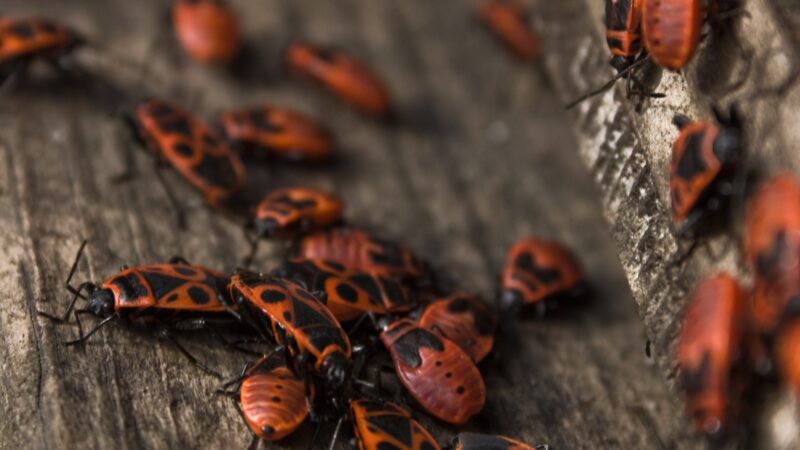
It is normal to get bugs in the summer. Some insects mainly prefer warmer temperatures, so they increase in numbers during the summer.
7 Summer Insects That Can Ruin Your Day at the Beach
Sea Spiders
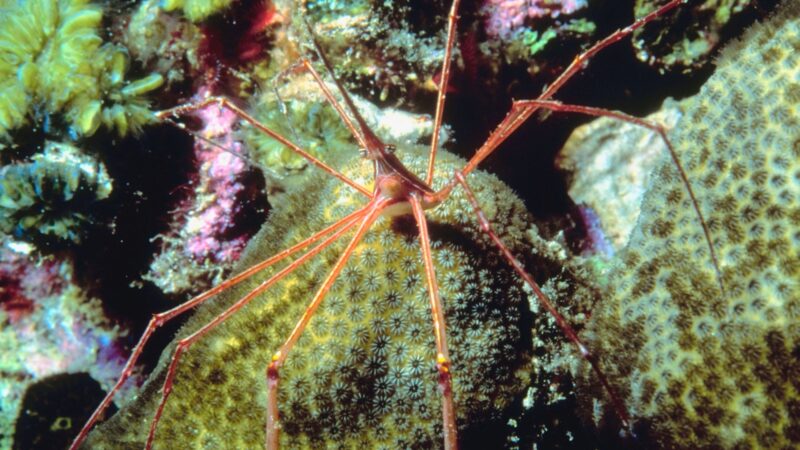
Sea spiders are one of the most bizarre-looking spiders since they are characterized by having extremely small bodies but long, clawed legs. They can be found on beaches, along the intertidal regions, and up to depths of 7,000 meters, reaching as far as the ocean floor. Most sea spiders are found in Antarctica.
- Scientific Name: Pycnogonida
- Appearance: Small bodies that are not evenly divided have long and hinged legs, an unusual proboscis, and eight legs, although some species have more than four pairs of walking legs.
- Color: White or the same color as their surroundings
- Lifespan: Unknown
- Habitat: In or near tropical, polar, and temperate oceans. They either live in shallow water or the deep sea abyss.
- Length: 1 millimeter to 50 centimeters
- Wingspan: N/A
- Diet: Soft-bodied animals such as worms, anemones, nudibranchs, jellyfish, soft corals, and sponges
- Characteristics: Moves incredibly slow and feeds using their straw-like proboscis.
Dock Spiders
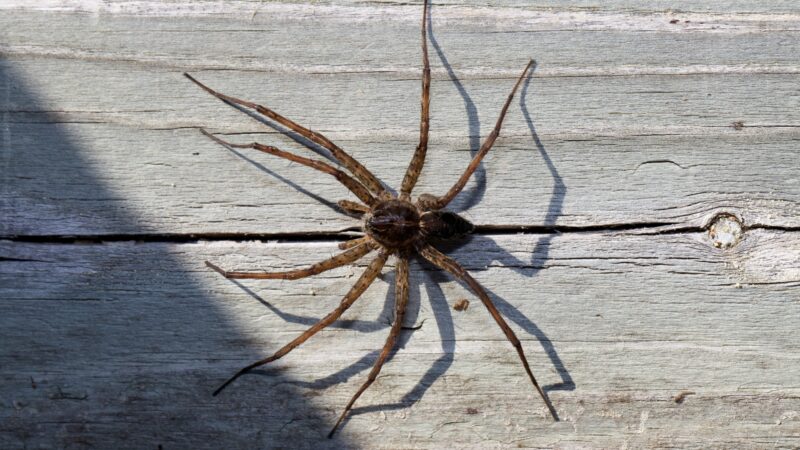
Also known as fishing spiders because they usually live near water sources and have been reported to catch and eat small fishes, tadpoles, and aquatic insects from the water while they walk on the surface. They are large enough to bite humans, but they are generally shy and will immediately flee from humans when they feel threatened.
- Scientific Name: Dolomedes
- Appearance: Eight eyes, hairy legs, strong fangs, and fairly large.
- Color: Brownish gray with black and light brown markings. The legs are banded with alternating black and brown. Some species have white markings.
- Lifespan: Up to 2 years
- Habitat: Near a water source (streams, reservoirs, marshes, woods, seas) such as boat docks and lakeside vegetation
- Length: 7 to 26 millimeters
- Wingspan: N/A
- Diet: Small fish, minnows, tadpoles, tiny frogs, and aquatic insects
- Characteristics: These spiders can hibernate. They also have excellent eyesight and do not spin webs.
Beach Wolf Spiders
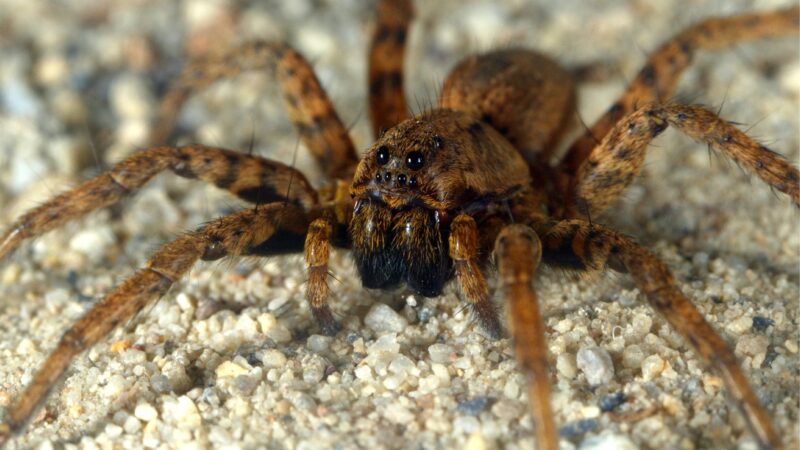
There are about 238 different species of wolf spiders found in America, and they are seen living in almost any habitat, including beaches. They are hunting spiders, which means they don’t just sit and wait, they go out and look for food themselves. Although they are rarely aggressive, they may bite as a self-defense mechanism when handled poorly.
- Scientific Name: Lycosidae
- Appearance: Similar in appearance to dock spiders and are known to camouflage for protection. Females are usually seen with a round, silken egg sac attached at the end of their abdomens.
- Color: Black or brown body with dark and light markings, most commonly stripes, across their bodies
- Lifespan: 1 to 3 years
- Habitat: Beach tidal zones, grasslands, meadows, farm fields, and mountaintops
- Length: 3 to 30 millimeters
- Wingspan: N/A
- Diet: Insects such as ants and grasshoppers, as well as other invertebrates such as worms and spiders
- Characteristics: Solitary animals that are nocturnal, and most do not spin any webs. They have excellent eyesight compared to other spiders.
Mosquitoes
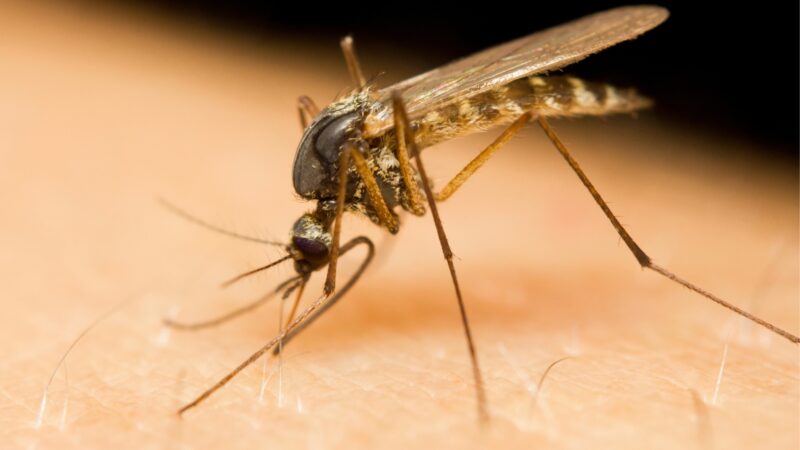
There are more than 3,000 species of mosquitoes worldwide, with 176 of these found in North America. Although not all can transmit diseases, they are still a nuisance as they readily feed on humans and pets. They can be found in a wide variety of habitats but are typically found near water sources.
- Scientific Name: Culicidae
- Appearance: Small, slender, two-winged flies with long, thin legs and antennae, spherical-shaped heads, large compound eyes, six legs, and microscopic scales that cover their entire bodies and wings.
- Color: Gray or black with green, white, silver, or blue scales
- Lifespan: Up to 5 months
- Habitat: Anywhere where there is freshwater or slightly salty water, such as ponds, puddles, tree holes, salty marshes, and swamps.
- Length: 0.2 to 1 centimeter
- Wingspan: Up to 3.3 millimeters
- Diet: Nectar and sugar (males), human and animal blood (females)
- Characteristics: Both males and females develop long, slender mouthparts, but only mosquitoes bite through human and animal skin and suck blood, while females suck plant juices and sugar sources. They are usually solitary and can be both nocturnal and diurnal.
Sand Flies
Sand flies refer to several species or genera of blood-sucking, flying critters but true sand flies belong to the subfamily Phlebotominae. They can cause sandfly fever, causing flu-like symptoms such as fever, headache, eye pain, and malaise lasting up to 4 days. Sores and ulcers can also form on the bitten area.
- Scientific Name: Phlebotominae
- Appearance: Broad, pointed, V-shaped wings that are held erect even when resting, long and slender legs, long and virtually cylindrical antennae, large compound eyes, humped thoraces, and bodies that are densely covered with bristle-like structures called setae.
- Color: Yellow or silvery brown
- Lifespan: 1 to 3 months
- Habitat: Tropical dry forests, rodent burrows, caves, under dead leaves, beaches, lakebeds, wetland creeks, and rock crevices.
- Length: Up to 2 millimeters
- Wingspan: Up to 2.3 millimeters
- Diet: Blood from animal and human hosts and sugar meals obtained from plants
- Characteristics: Females are known to have mouthparts used for biting and sucking blood while males have prominent external structures that extend past the edge of their abdomens called the coxes.
Beach Isopods
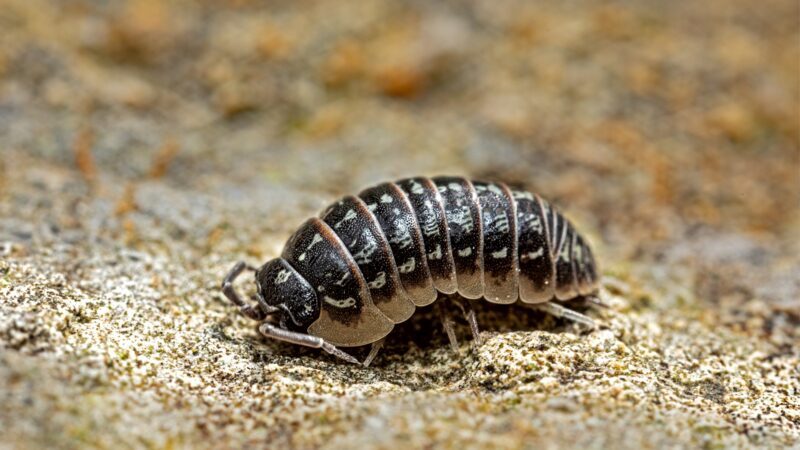
Beach Isopods are harmless creatures known for their many names—pillbug since their appearance resembles a pill, roly-poly due to their defensive behavior of rolling into a ball when disturbed, and woodlouse, which is a general term referring to both sowbugs and pillbugs in Europe. They are crustaceans, and are more closely related to crayfish and shrimp than insects.
- Scientific Name: Armadillidium vulgare
- Appearance: Oval-shaped bodies with one pair of antennae, compound eyes, seven pairs of legs, and backs that are covered with hard, individual plates
- Color: Ranges from gray to brown
- Lifespan: 2 to 5 years
- Habitat: Dark humid places such as rocks, fallen leaves, mulch, logs, and soils that are neutral or alkaline and have organic matter found in forests, gardens, and fields.
- Length: 8.5 to 18 millimeters
- Wingspan: N/A
- Diet: Waste material and decaying matter from dead animals and plants
- Characteristics: Semi-aquatic, nocturnal organisms that breathe through gills despite living on land. They can absorb moisture from the air, allowing them to stay hydrated.
Sand Fleas
Also known as the Jigger of Chigoe Flea, Sand Fleas are small, burrowing parasitic insects native to Central and South America and are known to attack humans between the toes or just under the toenails. They cause tungiasis, which causes inflammation, ulcers, tetanus, and gangrene if the infected area is left untreated.
- Scientific Name: Tunga penetrans
- Appearance: Tiny, wingless insects that have laterally compressed bodies, three pairs of legs, and body hairs.
- Color: Reddish brown
- Lifespan: 4 to 6 weeks
- Habitat: 2 to 5 centimeters below sand in tropical and subtropical areas such as beaches, farms, and stables
- Length: Less than 1 millimeter; females can reach up to 1 centimeter
- Wingspan: N/A
- Diet: Human and animal blood
- Characteristics: While both male and female adults feed on their warm-blooded hosts, only mated females can cause tungiasis as they burrow using their mouthparts and claws.
Related: What Is the Natural Way to Get Rid of Sand Fleas? | Information and Control Guide
How Do You Keep Bugs off Your Beach?
Pick up and discard trash since some insects like to flock near them. Steer clear from any tall grasses and brushes as they are potential breeding sites for insects. Purchase insect repellents that are registered by the Environmental Protection Agency (EPA).
If possible, protect yourself by wearing light-colored clothing, long-sleeved shirts, high-cut shoes, and long pants to avoid getting bitten by bugs.
Do All Beaches Have Sand Fleas?
Not all beaches have sand fleas. Depending on your geographical location, they may even be rare. However, they can spread easily once they are introduced in an area.
Frequently Asked Questions
Why Are There So Many Bugs on the Beach?
Certain bugs like to bask in warm temperatures, which is why they may be found more on the beach, especially when it’s summer.
Why Are Insects More Active in Summer?
The summer heat allows them to receive the energy they need to be active. In this season, their metabolism is also faster, which is why they actively search for more food. Furthermore, insects are cold-blooded, and by nature, they are more prolific during months with more heat.
Can Sand Fleas Hurt You?
Sand fleas can hurt you since they are known to bite humans and cause inflammation. If the infected area is left untreated, it can develop ulcers, tetanus, and gangrene.
Do Beach Flies Bite?
Beach flies do bite as they require blood meals from human hosts as well as animals to survive.
Do Insects like Summer?
Insects like summer because they are more active when temperatures are warm.
Are Bugs Worse in Summer?
Bugs are worse in summer since bug activity is increased in the summer season and they also increase in numbers. This means that your chances of encountering more pests also increase.
List of Sources
Hoggard, A. Roly-poly (Armadilldium vulgare). California State University.
Carrasquilla, M. C., Kaufman, P. E. Common name: a sand fly. University of Florida.
Tungiasis. (2017). Centers for Disease Control and Prevention.
Ebeling, W. Pests Attacking Man and His Pets. UC Riverside – Department of Entomology.
- How to Get Rid of Turtles | Proven Long-Term Solutions! - August 26, 2023
- How to Get Rid of Kingsnakes | Easy & Humane! - August 26, 2023
- How to Get Rid of Northern Water Snakes | Best Solutions and Preventative Measures! - August 19, 2023
